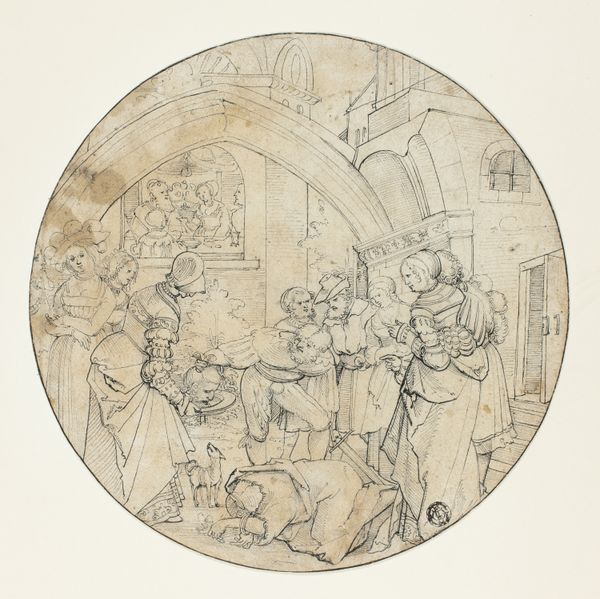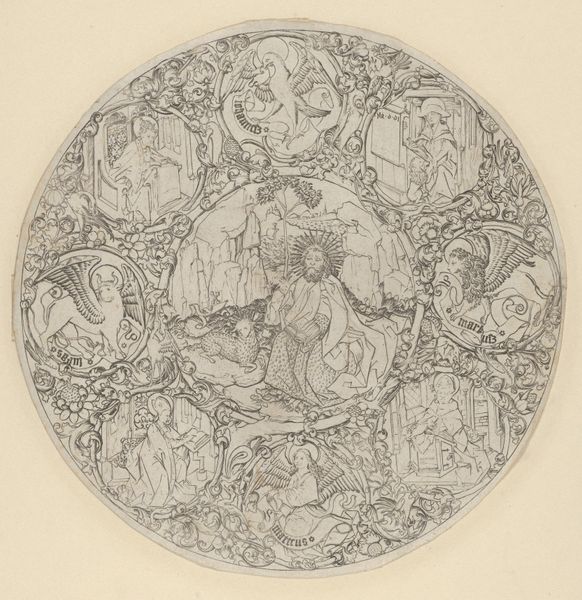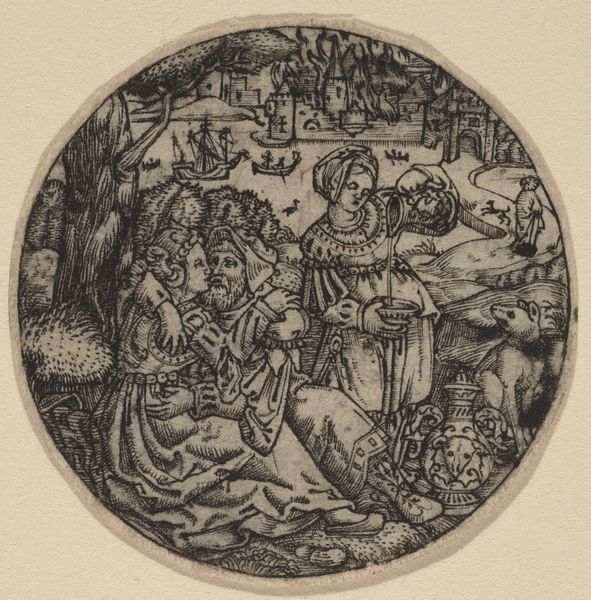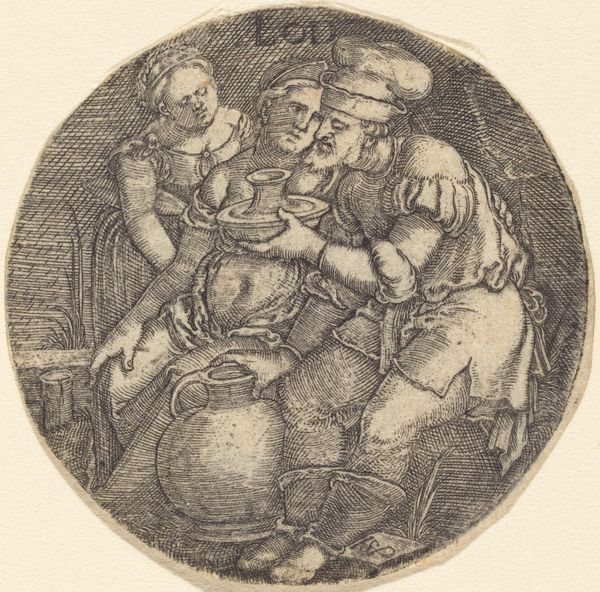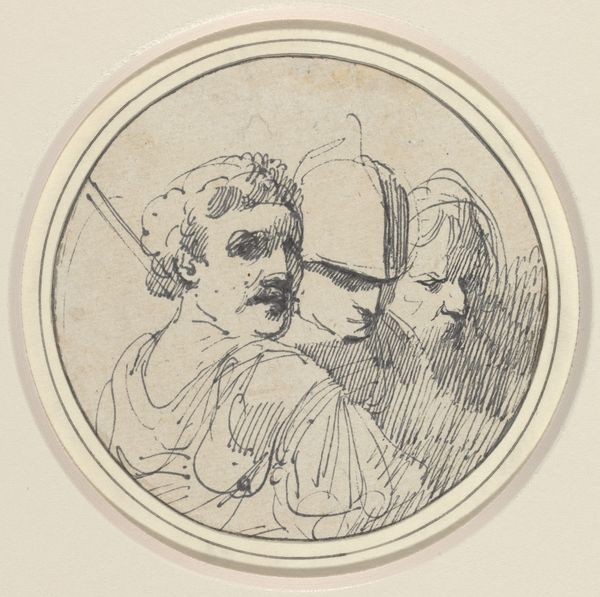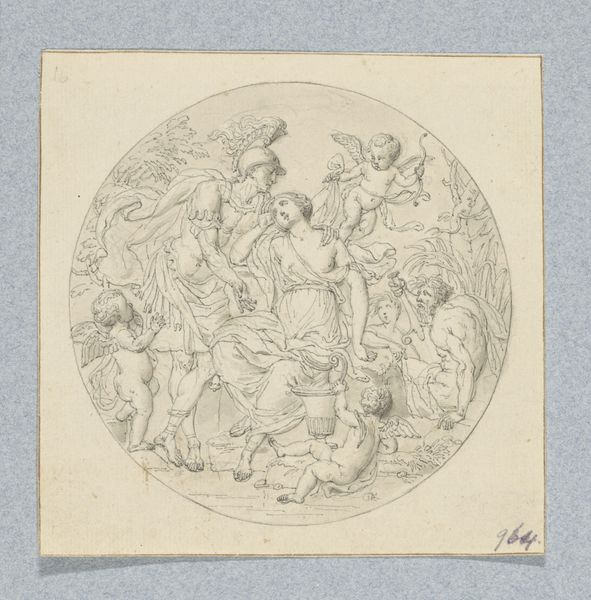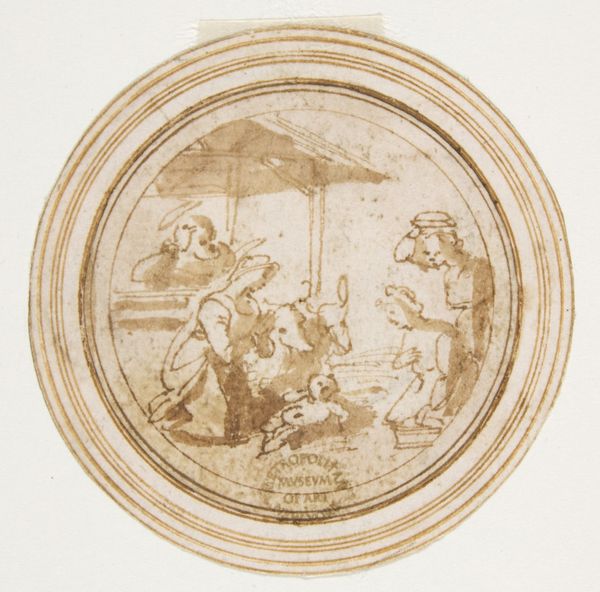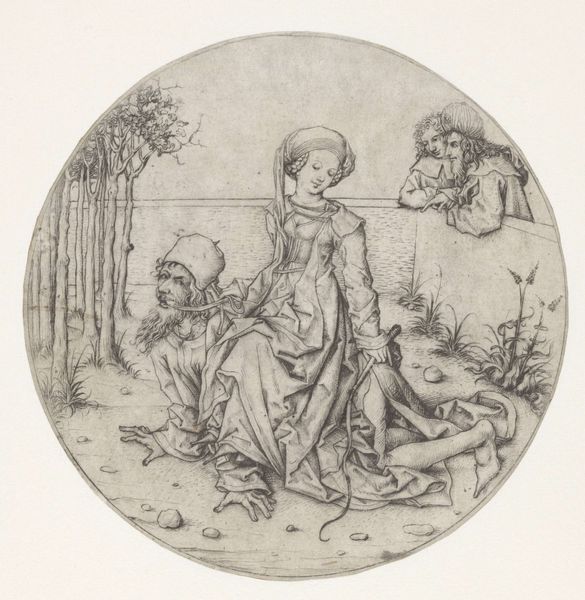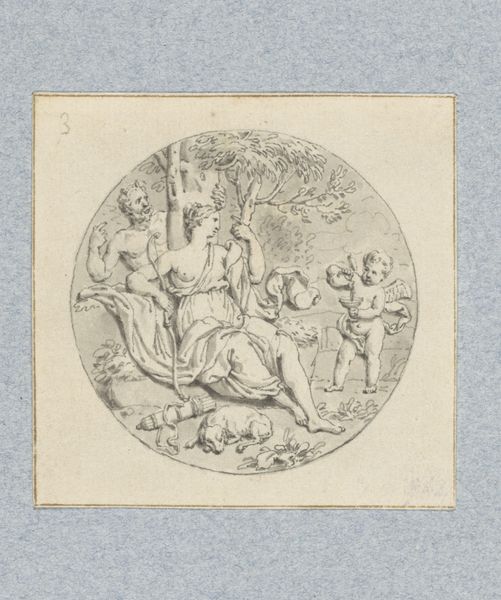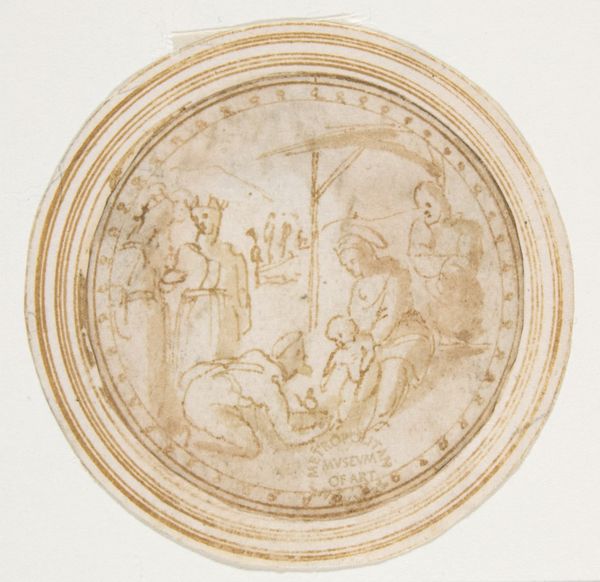
drawing
#
drawing
#
light pencil work
#
pen sketch
#
cartoon sketch
#
personal sketchbook
#
ink drawing experimentation
#
pen-ink sketch
#
sketchbook drawing
#
watercolour illustration
#
storyboard and sketchbook work
#
sketchbook art
Dimensions: overall (roundel): 9 cm (3 9/16 in.)
Copyright: National Gallery of Art: CC0 1.0
Curator: Here we have John Hamilton Mortimer's "Three Oriental Heads," a drawing dating from about 1770 to 1775. Editor: The first thing that strikes me is this wild energy. It feels like a quick sketch, a burst of an idea captured on paper. See how the lines almost vibrate with intensity? Curator: Indeed. And I find myself wondering, "oriental" according to whom, and at what cost? This depiction, made at the height of British imperialism, likely reflects a specific, and perhaps distorted, understanding of "the Orient," viewed through a colonial lens. We have to interrogate how power informs representation. Editor: Oh, absolutely, it’s a product of its time, for sure, like a dream half remembered, a little rough around the edges. It's all curves and flourishes – look at the plume on that helmet. Do you think they were costume studies or just playful doodles? Curator: Considering Mortimer’s interest in historical and dramatic themes, it is highly likely he was exploring costuming and character possibilities. His artistic choices may be a reflection of the period's fascination with the exotic and its inherent biases. Editor: I get the theatrical vibe for sure. They seem almost like figures from a play – slightly larger than life, caught in a moment of high drama. The medium, this flurry of ink, really amplifies the intensity. Curator: And we must acknowledge that terms like "oriental" are deeply problematic now, often evoking outdated, racist stereotypes. Examining art like this provides an opportunity to unpack those complex and uncomfortable histories, revealing whose perspectives were centered, and whose were marginalized. Editor: Agreed, it’s good to prod the picture, isn’t it? What stories were considered important? What wasn't included? Now I’m looking at that headdress with new eyes and asking myself some of the same questions! It might not all be comfortable, but it definitely gets your attention. Curator: Precisely! Let us reflect on what it means to view art of the past through a lens of contemporary critical awareness. Editor: Exactly, thinking about how even something simple can trigger questions, the kind of thoughts that swirl in your mind long after you’ve left the gallery!
Comments
No comments
Be the first to comment and join the conversation on the ultimate creative platform.
